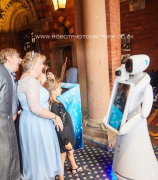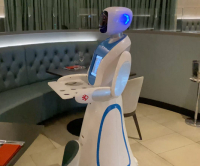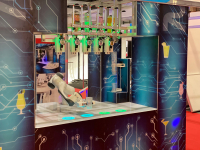Why Robots Will Revolutionise Restaurants
With the global market for industrial robots growing every year, it comes as no surprise that robots are slowly making their mark in different industries. In the hospitality sector, automation and labour saving are already in place, making a difference in many restaurants around the world.
Cobots, advanced robots that work alongside humans, are ideal in restaurant settings. They are primarily used to perform simple tasks such as serving or vending food items. They can automate various repetitive and mundane tasks in a restaurant or handle over-the-counter tasks. An example of a cobot is a soda vending machine, which is a fully automated machine selling beverages, accepting payments, and providing the user with the desired item.
With advancements in the field of robotics, the capabilities of cobots have increased tremendously. Restaurants are already leveraging cobots for simplifying food ordering and payment processes. With just a few clicks, customers can order their favourite meals and pay for them quickly. In addition, robot restaurants are popping up everywhere, indicating the future of the industry. For example, China’s Alibaba has opened an ingenious automated eatery called Robot.he, in its Shanghai Hema Supermarket.
The restaurant offers a “Jetson like food experience.” ‘Creator’, a burger restaurant without any human chefs in San Francisco, has its robot to do it all. Here, cobots will take care of the slicing, toasting, buttering of burger buns, adding layers of salad, shredding cheese, as well as grinding and cooking hormone-free beef and assembling it all in just five minutes. According to Tech Crunch, the efficiency of the robot allows the restaurant to offer their gourmet burgers for only $6, saving loads on time, space and labour.
Another robot restaurant, Spyce in Boston, was established by four MIT graduates and offers vegetarian, vegan and gluten-free bowls, each for $7.50, cooked by a robotic chef. A few humans work in the kitchen to add garnish. In Pasadena, California, a robot short-order cook called “Flippy” works the grill at burger restaurant Caliburger. But robots can do more than just cook, they can also entertain. At the Izakaya restaurant Junkichi in Seattle, robots interact with guests at the table.
With the endless possibilities of robots, many companies are now developing automated bots for both restaurant kitchens and dining rooms. While service robots can’t fully replace humans, they can help combat labour challenges, and increase productivity and efficiency by saving time, cost and increasing profits. From chipping, food processing, mixing, mincing, sausage stuffing and more, robots are gaining skills that prove useful in restaurant kitchens. They can also help minimise decision-making time when orders come in. And best of all: they can clear dirty spaces, wash dishes and clean the kitchen after finishing cooking.
So what does the future look like? Chinese online retailer JD.com envisions 100% automation, including people-free warehouses and unmanned physical stores. This means that retail sales personnel and waiters/waitresses could be replaced in the long term, or at least see a greater balance between robot and human workforce. Whether this will turn out to be true remains to be seen but one thing is clear: robots and cobots are here to stay.




